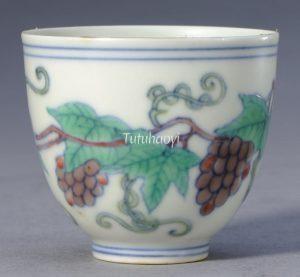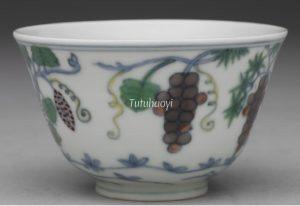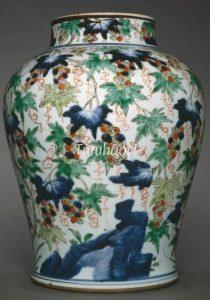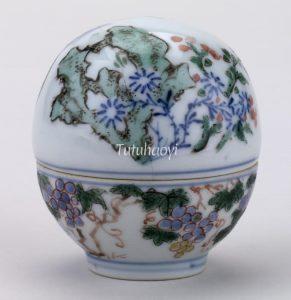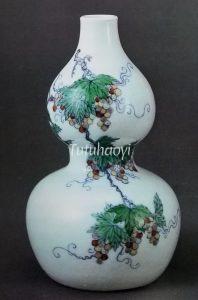Grape
葡萄
© Tutuhaoyi.com owns the copyright of the description content for the images attached. Quoting all or part of the description content on this page is permitted ONLY IF ‘Tutuhaoyi.com’ is clearly acknowledged anywhere your quote is produced unless stated otherwise. (本页描述内容版权归Tutuhaoyi.com所有,转发或引用需注明 “Tutuhaoyi.com”, 侵权必究, 已注开源信息的条目除外。)
Grapes grow in clusters of up to 300 berries each and thus produce an enormous number of seeds. This property was regarded by the ancient Chinese as an apt allusion to their wish for a large number of offspring. That is why grapes are seen adorning various kinds of Chinese antiques, handcrafts, and bric-a-brac, often, together with squirrels, which are known for their amazing ability to multiply, and the two together form a make-belief scene of animal eating habit.
Fig 1: porcelain dish with underglaze blue decoration, Jianwen – Yongle period (1399–1424), Ming dynasty, courtesy of the Rijksmuseum, Amsterdam
Fig 2: porcelain dish with underglaze blue decoration, Xuande period (1426–35), Ming dynasty, courtesy of the Cleveland Museum of Art, Ohio
Fig 3: doucai porcelain cup, Chenghua period (1465–87), Ming dynasty, courtesy of the Palace Museum, Beijing
Fig 4: doucai porcelain cup, Chenghua period (1465–87), Ming dynasty, courtesy of the National Palace Museum, Taipei
Fig 5: oval cinnabar dish, 16th-17th century, courtesy of the National Palace Museum, Taipei
Fig 6: porcelain jar with underglaze blue and overglaze enamelled decoration, c.1640–1680, courtesy of Musee national des arts asiatiques – Guimet
Fig 7: porcelain box with cover with underglaze blue and overglaze enamelled decoration, Kangxi period (1662–1722), Qing dynasty, courtesy of the Trustees of the British Museum
Fig 8: gourd-shaped porcelain vase, Yongzheng period (1723–35), Qing dynasty, courtesy of the National Palace Museum, Taipei


